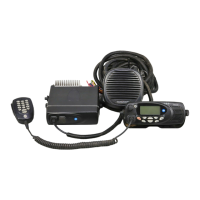TM8100/TM8200 Service Manual TMAA04-06 Linking and Interface Cable 583
© Tait Electronics Limited November 2007
channels there is a brief break in reception, which will cause the transmit
timer to restart.
Squelch override is not compatible with cross-band repeater operation.
Avoid programming this feature to a function key, and consider removing
the menu option.
Transmit Inhibit If both radios are receiving activity when cross-band repeater mode is
activated, the radio system can rapidly cycle between transmit and receive.
Set Tx Inhibit to Busy to prevent this from happening by not allowing the
radio system to transmit when there is another busy signal. An alternative is
to set different debounce times for each radio (such as 10 and 100 ms),
which will separate each radio’s entry into cross-band repeater mode.
If the cross-band repeater is programmed to only re-transmit valid signals,
and one radio is receiving an invalid signal (such as invalid CTCSS), the
mute will stay closed and no re-transmission will occur. However, if the
other radio then receives a valid signal, the radio will attempt to re-broadcast
this over the other signal. Set Tx Inhibit to Busy or Mute to prevent this
re-transmission occurring.
System Timing For the cross-band repeater to operate correctly with other base stations or
repeaters, system timing must be taken into account. If using subaudible
signalling and the transmitter requires a “tail”, then this can be configured
according to Table 31.4. During the lead-out delay period, no signalling,
such as CTCSS or DCS, is present.
31.1.3 Operational Testing
1. Enable cross-band repeater mode.
2. On the receiving radio, inject an on-channel RF signal at a level of
-70dBm, modulated to ±3kHz deviation (wide bandwidth channel)
or ±1.5kHz (narrow bandwidth channel), at 1kHz AF.
3. On the transmitting radio, the resulting deviation should be:
■ ±3kHz (with a tolerance of ±200Hz) on a 25kHz wide
bandwidth channel.
■ ±1.5kHz (with a tolerance of ±200Hz) on a 12.5kHz narrow
bandwidth channel.
Table 31.4 Transmit tail in the Basic Settings form, Subaudible Signalling tab
Field Setting
CTCSS Settings Lead-Out Delay any duration, up to 1000ms
DCS Settings Lead-Out Delay any duration, up to 1000ms

